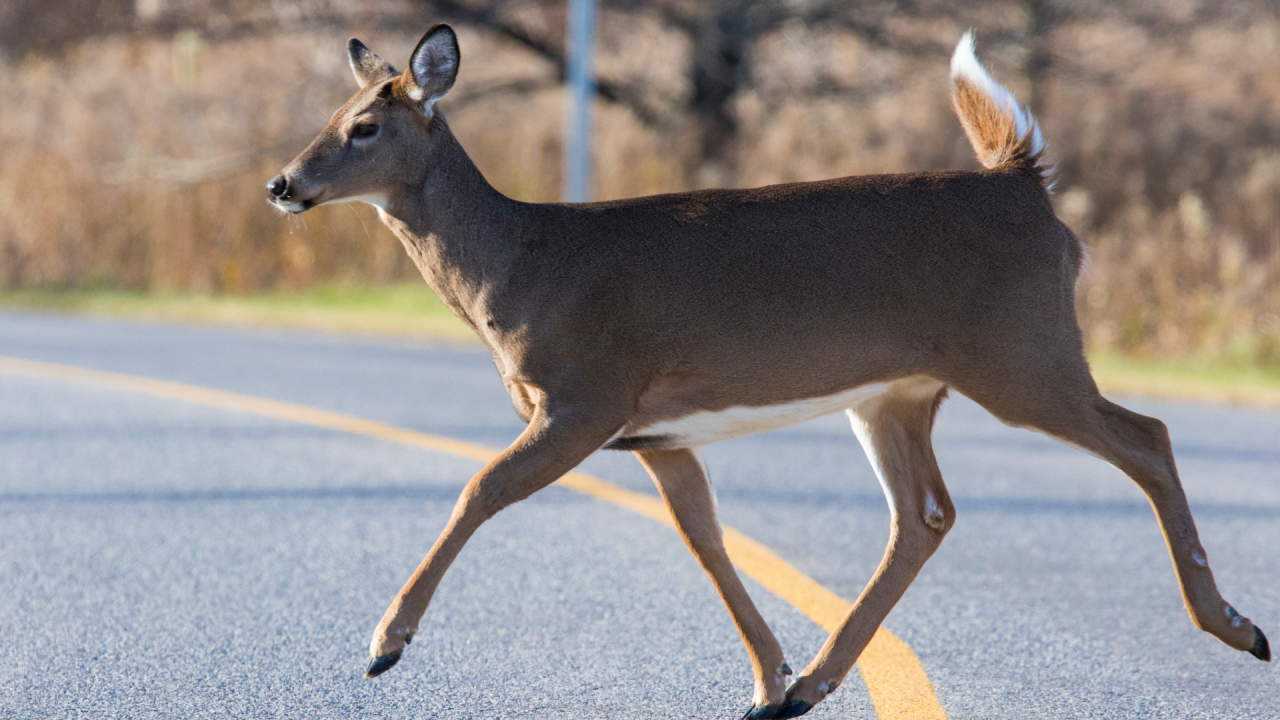GREAT FALLS — Montana is famous for its stunning landscapes and abundant wildlife, but when that wildlife crosses paths with drivers on the highway, it can lead to dangerous situations. Deer impacts on the freeway are on the rise, and with Montana ranking as the second worst state in the nation for deer collisions, it's essential to stay alert while driving.
According to State Farm: "Drivers in West Virginia held on to the number one spot with the least favorable odds at 1 in 38. Montana (1 in 53), Pennsylvania (1 in 59), Michigan (1 in 60), Wisconsin (1 in 60) round out the top five most likely states to hit an animal while on the road."
Why Are Deer Collisions Increasing?
David Hagengruber, Communication & Education Manager for FWP Region 4, explains that the timing of deer collisions often coincides with specific phases in the deer's life cycle. "The way that these vehicle collisions kind of work is dependent on what's going on with the deer or antelope or elk, but primarily for us, it's deer," says Hagengruber.
According to data from State Farm Insurance Company, collisions are particularly prevalent during two key periods: May and June, when new fawns are born, and October through November, which marks the start of the rutting season.
- Obituary: Keely Drummond Schearer
- Deputy shoots armed man in Valley County
- Stuffed bears along highway: WHY?
During the rut, male deer are especially unpredictable as they focus on chasing does, often with little regard for their surroundings. "When the males are just kind of crazy out there running around chasing the does... if there's a doe going across, it's really likely she has a fawn or even last year's fawns that have rejoined," Hagengruber notes. This makes it crucial to expect more than one deer when you spot one on or near the road.
The Impact of Shorter Days
As daylight hours decrease in the fall, the chances of encountering deer on the road increase. "Plus, it's darker," Hagengruber adds. "The days are shorter, and nights are longer, and that's when they're active. They're not active nearly as much during the day." With deer being more active during dawn and dusk, drivers should be extra vigilant during these hours.
What to Do If You Hit a Deer
If you do hit a deer or another animal, the first step is to pull over to a safe spot and call local law enforcement. In Montana, there is also an option for drivers who wish to keep the animal. A vehicle-killed wildlife salvage permit is available for certain species, allowing the animal to be utilized for food.
"So if they want to take the animal, there is a procedure," Hagengruber explains. "They can take the animal themselves if they're going to utilize it for food."
To file a Vehicle-Killed Wildlife Salvage Permit follow this link.
Staying Safe on the Road
Ultimately, the responsibility lies with drivers to be cautious and aware of their surroundings. As Hagengruber emphasizes, "The big thing, you know, we can't control their actions. So it's up to the driver to really, really be aware." He also points out that deer aren't just a concern on highways outside of town. "There's a lot of animals in town. A lot of deer are within city limits."
State Farm provides the following advice:
- Slow down, especially if you see an animal close to the road.
- Stay alert. Scan the road for animals at any time of the day or night.
- Pay attention to “deer crossing” and other animal signs.
- Reduce distractions. Put the cell phone away.
- Brake as necessary. If you can avoid hitting the animal, reduce your speed, honk your horn and tap your brakes to warn other drivers.
- Don't swerve. If a crash with an animal is inevitable, maintain control of your vehicle and don't veer off the road.
- Use high beams. Flicking your high beams on wildlife may cause the animal to scurry away.
- Be aware of peak season. Animal crashes, especially deer, happen most often during October through December, which is hunting and mating season.
- Watch for animals on the road between dusk and dawn.
- Watch for herds. If you see one deer, there are probably more nearby.
Whether you're driving on the highway or through town, always be on the lookout for wildlife, especially during peak collision times. By staying alert and knowing what to do if you encounter a deer, you can help keep Montana's roads safer for everyone.





